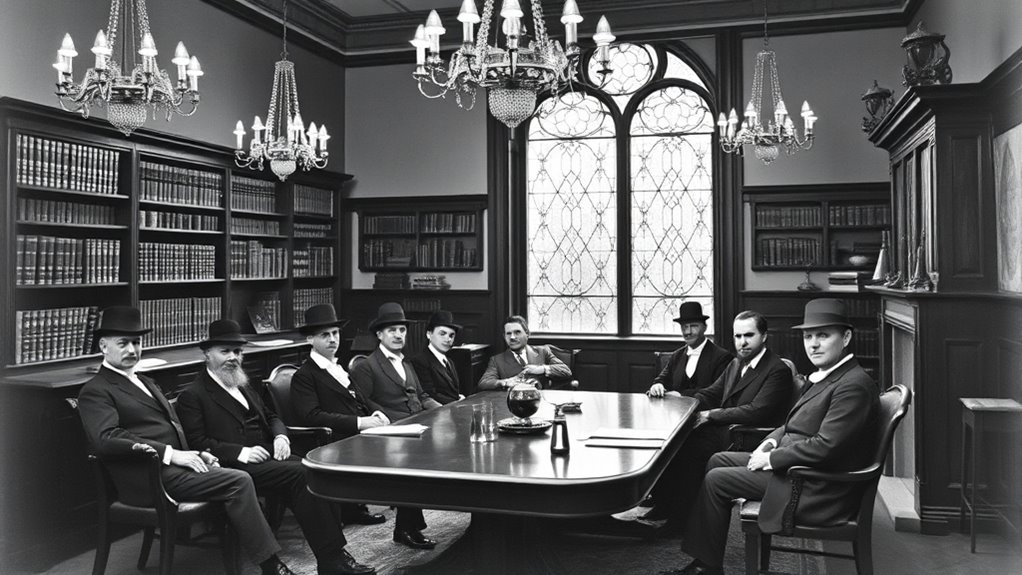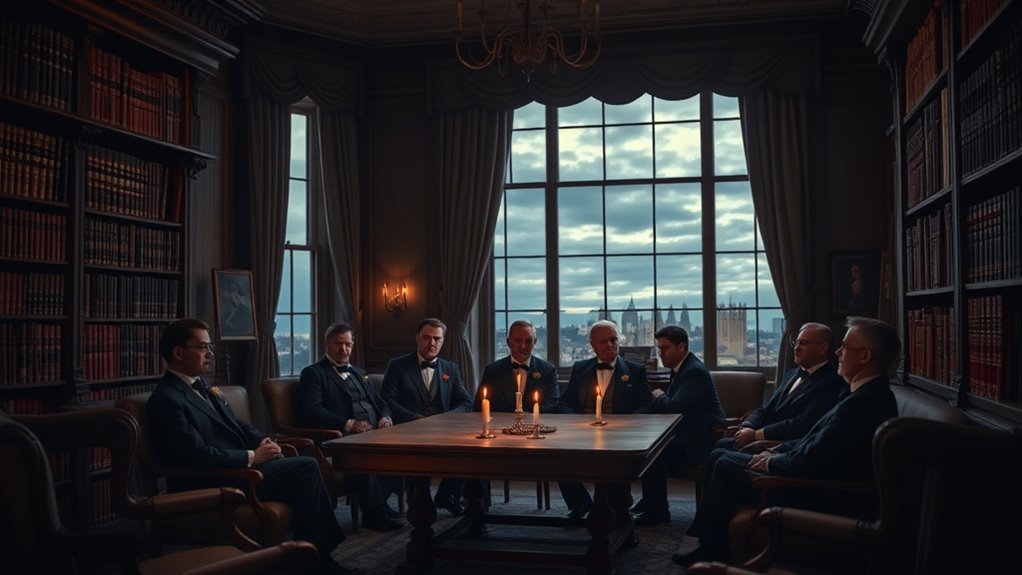The Society for Psychical Research was founded in 1882 by scientists and scholars enthusiastic to investigate paranormal phenomena scientifically. They aimed to examine claims like telepathy, clairvoyance, and mediumship through controlled experiments, emphasizing rigor and transparency. Unlike spiritualist movements, they sought proof and critical analysis to understand unexplained events. If you’re curious about how they shaped scientific inquiry into the paranormal, there’s much more to discover about their innovative methods and lasting impact.
Key Takeaways
- The Society for Psychical Research was founded in 1882 by scientists and scholars to investigate unexplained phenomena scientifically.
- Its founders aimed to bring rigorous methodology to paranormal investigations, inspired by spiritualist movements.
- The organization emphasized empirical evidence, controlled experiments, and transparent research practices.
- It sought to legitimize paranormal claims through scientific inquiry, challenging dismissive attitudes toward supernatural phenomena.
- The society laid the groundwork for modern parapsychology and ongoing scientific study of psychic phenomena.

The Society for Psychical Research was founded in 1882 by a group of scientists and scholars determined to investigate unexplained phenomena scientifically. You might wonder what motivated these individuals to come together—many were influenced by the rise of spiritualist movements sweeping across Europe and America during that period. These movements claimed to communicate with spirits and explore supernatural domains, sparking both fascination and skepticism. The founders believed that many of these claims deserved rigorous examination rather than dismissal or uncritical acceptance. Their goal was to establish a scientific approach to studying phenomena often dismissed as mere superstition or fraud.
Founded in 1882, the Society aimed to scientifically investigate unexplained phenomena inspired by spiritualist movements.
As you explore more, you’ll see that the society prioritized conducting parapsychology experiments designed to test the validity of such claims. These experiments ranged from investigating telepathy and clairvoyance to examining mediums who claimed to produce spirit phenomena. Instead of accepting spiritualist assertions at face value, members sought empirical evidence, often setting up controlled conditions to eliminate trickery or bias. This scientific rigor distinguished the society from the spiritualist movements, which frequently relied on anecdotal evidence and emotional appeals. The society’s approach aimed to bring objectivity to what was often considered fringe or unscientific territory. Moreover, their work contributed to the development of research standards that emphasized methodological rigor and scientific integrity.
You should appreciate that the founding members were motivated by a desire to bridge the gap between science and the unexplained. They recognized that many phenomena reported by spiritualist movements could not be easily dismissed, and they wanted to explore their legitimacy through systematic investigation. Their efforts led to the development of experimental protocols and methodologies that are still referenced in parapsychology today. Furthermore, the society actively promoted scientific skepticism, encouraging critical analysis alongside open-minded inquiry. While some skeptics dismissed their work as naive or sensational, the society persisted in its mission, emphasizing transparency and reproducibility.
The impact of the society’s early work extended beyond just testing spiritualist claims. It helped legitimize the study of paranormal phenomena as a legitimate scientific field. You might find it fascinating that the society’s investigations laid the groundwork for future research in areas like psychokinesis, extrasensory perception, and the nature of consciousness. By establishing a scientific framework around these phenomena, the society challenged prevailing notions that supernatural claims were mere superstition. Instead, they opened a door for ongoing inquiry into the mysteries that continue to intrigue scientists and the public alike. Their pioneering efforts marked the beginning of a serious, systematic approach to understanding the unexplained, shaping the landscape of psychical research for generations to come.
Frequently Asked Questions
Who Were the Key Founders of the Society for Psychical Research?
You’re curious about the key founders of the Society for Psychical Research, which was established to investigate paranormal phenomena and spiritual phenomena scientifically. You should know that prominent figures like Henry Sidgwick, Frederic W. H. Myers, and Edmund Gurney played crucial roles. They aimed to explore these mysterious occurrences objectively, advancing understanding of spiritual phenomena through rigorous research and fostering a scientific approach to paranormal investigations.
What Were the Initial Goals of the Society?
Imagine opening a window to the unknown—this captures the Society’s initial goals. You’re drawn to explore the mysterious, seeking answers through experimental methods and paranormal investigations. The society aimed to scientifically study phenomena like telepathy and spirit communication, separating fact from fiction. Your curiosity fuels this quest, driven by a desire to understand whether the supernatural truly exists, turning speculation into evidence and myth into knowledge.
How Was the Society Received by the Scientific Community?
You might find that the scientific community initially approached the Society for Psychical Research with skepticism, questioning the validity of its investigations. While some researchers remained open to academic acceptance, many expressed scientific skepticism, doubting the society’s methods and findings. Over time, though, the society gained a cautious level of credibility as it systematically examined paranormal claims, gradually influencing broader scientific perspectives.
Did the Society Face Any Significant Controversies?
Think of the Society for Psychical Research as a brave explorer steering a stormy sea of doubt. You’d see it face significant controversies, battling both scientific skepticism and public skepticism. Critics questioned its methods and motives, sometimes dismissing it as pseudoscience. Yet, these challenges spurred it to refine its approaches. Despite the turbulence, the society persisted, pushing boundaries and inspiring ongoing debates about the nature of the mind and consciousness.
How Has the Society Evolved Since 1882?
Since 1882, you see the Society for Psychical Research evolve by expanding its research methods, including conducting experiments and analyzing reports on paranormal phenomena. Its societal impact grows as it challenges skepticism and promotes scientific inquiry into the supernatural. You notice the society embracing new technologies and interdisciplinary approaches, which helps legitimize the study of psychical phenomena and influences public perceptions of paranormal research.
Conclusion
So, imagine yourself stepping into the incredible world where science meets the supernatural, all thanks to the founding of the Society for Psychical Research. You’re on the verge of uncovering secrets that could rewrite history, challenge everything you thought you knew, and unravel mysteries that have baffled humanity for centuries. This isn’t just research—it’s an epic journey into the unknown, where every discovery could change your life forever. Are you ready to plunge in?









